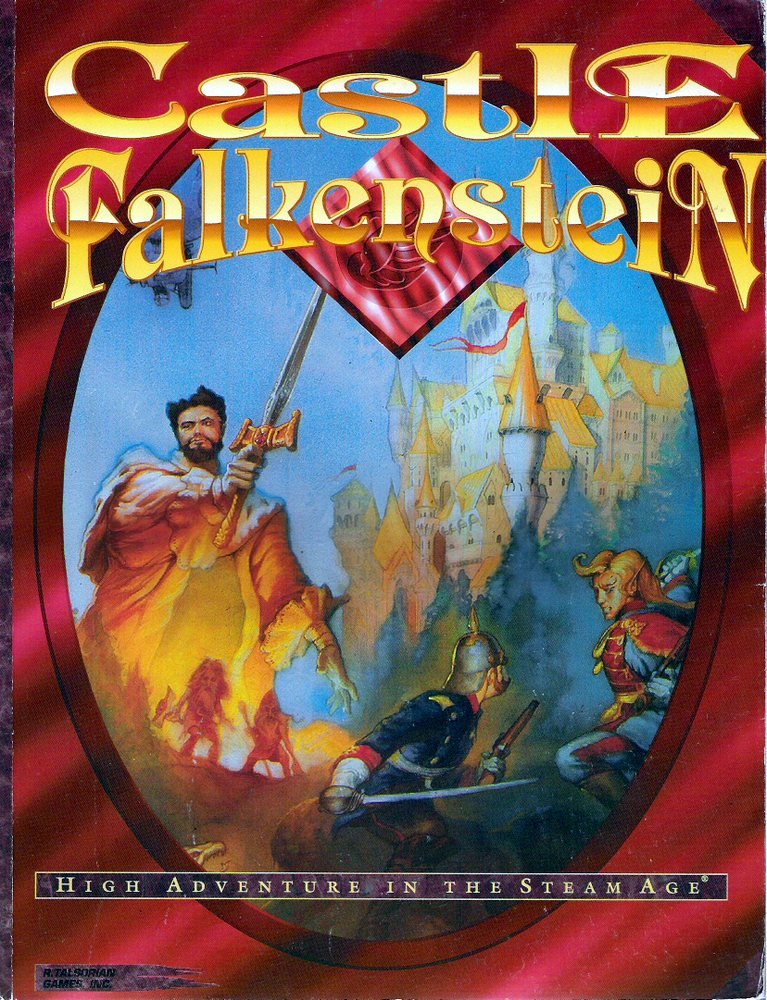I started to feel that I didn’t know roleplaying games well enough so I came up with the plan to read a roleplaying game corebook for every year they have been published. Selection criteria is whatever I find interesting.

I bought a copy of Castle Falkenstein in my local game store in Helsinki in 1994 when it came out but never read it. Going through it now, 25 years later, is interesting because it shares many elements of 90’s style game design that was formative to my understanding of roleplaying games.
One is an understanding of the roleplaying game as a toolbox the GM (or Host in this game) and the players use as basis for creating their own game. The system is not assumed to provide the actual content of the adventures, just the framework. It’s based on an understanding of the Host as an auteur, a model since challenged by all kinds of new game designs.
Castle Falkenstein is the definitive steampunk roleplaying game, although it doesn’t fit the genre exactly. Indeed, the game text itself notes that it’s not very punk at all, rather a Victorian pulp game with noble Heroes, beautiful Heroines and dastardly villains. There are cogs and steam engines but their role is decorative, for flavor.
As a book, Castle Falkenstein was a fun read because it so thoroughly ignores modern homilies about how a roleplaying game book should be constructed. The core game mechanic is explained on page 181. The bulk of the book is reserved for setting and story material.
The back cover promises that the book is both a roleplaying game and a novel, a story that will transport you to another world of “High Adventure in the Steam Age”. The entire book is written in an in-game voice of a man who was transported from our world to the world of the game. He explains his own adventures, the world and even the game systems.
The game was published in the Nineties at the glory days of setting design. Thus, it’s not content to wave things forward with a genre statement. Rather, the world is explained in an intricate detail, with theories of magic and technology to justify historical events. We learn that dragons are the descendants of magic-using intelligent pterodactyls.
I liked this a lot. In recent years I’ve seen so much flat and uninspired setting design it’s fun to see someone really get into it. A genre convention is not enough, there must also be a reason. It’s not the right choice for every game but in Castle Falkenstein it creates the impression of a rich, deep world.
Incidentally, the game system, relegated to the sidelines as it is, is also interesting. It’s based on playing cards and each player has a hand they can use tactically. In many games, you throw dice to see whether your character succeeds or fails. Here, there’s an element of uncertainty as well, but you can play a bad card on purpose on a less important challenge to save your good cards for later. It gives the player narrative control.
The gender politics of Castle Falkenstein are interesting. It’s steeped in what I’ve come to think of as “Nineties geek feminism” where you can glimpse a genuine progressive impulse but at the same time some elements come across as regressive.
The game faces the problem that it’s source material is not very progressive at all. If you want to do Jules Verne and Sherlock Holmes in the Victorian era, you have to make some adjustments if you wish to have playable female characters.
The book says that Castle Falkenstein’s world is more progressive on gender issues than our world. Women can be soldiers and adventurers. No character option is forbidden to them. (There is one character type unavailable for men, the Adventuress.) At the same time, there is only one woman among the characters introduced at the beginning of the book and she’s the hero’s love interest.
The job of the Hero is often to rescue the Heroine who is in danger of suffering a Fate Worse Than Death (a game term) at the hands of the Villain. However, the book suggests that this should be an unwanted kiss on the cheek or possibly an unwanted betrothal instead of anything worse.
I really like Castle Falkenstein’s unapologetic focus on it’s setting and genre. It’s a rarity among games of it’s time in that it centers romance as an important character activity, one of the four central pillars of the game.